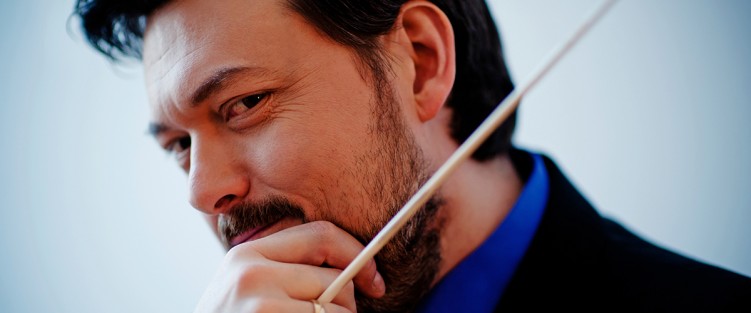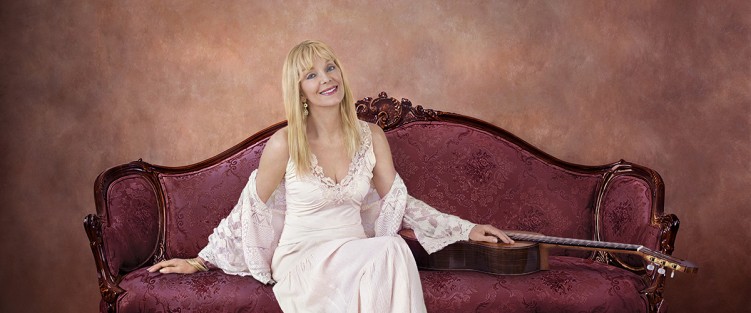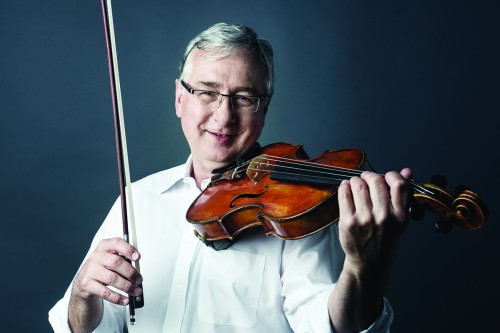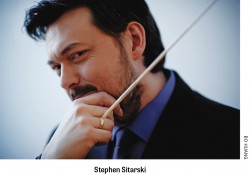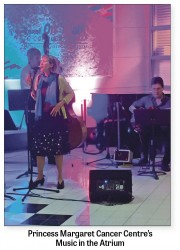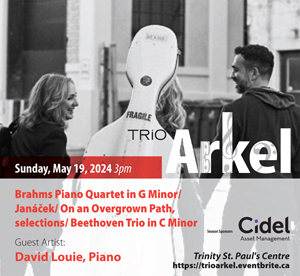Recollectiv’s Restorative Mission
![]()
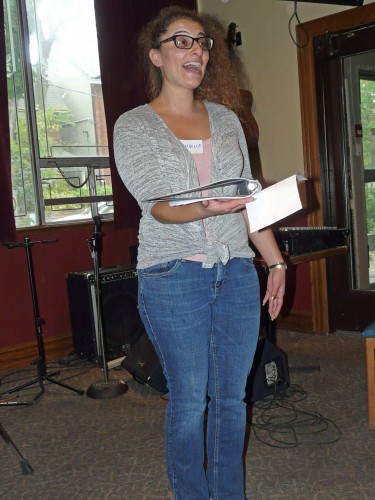 On a chilly fall Saturday at Toronto’s Tranzac Club, Recollectiv’s musicians with brain injuries and their care partners get ready for their regular hour-long sanctuary from stress. Caregivers find their charges’ name tags and seat them in a sunlit room decorated with instruments. As they catch up, their loved ones sit sedately. One man with a dazzling smile seems to invite conversation, but only speaks in monosyllables. A woman with orange hair stares into space.
On a chilly fall Saturday at Toronto’s Tranzac Club, Recollectiv’s musicians with brain injuries and their care partners get ready for their regular hour-long sanctuary from stress. Caregivers find their charges’ name tags and seat them in a sunlit room decorated with instruments. As they catch up, their loved ones sit sedately. One man with a dazzling smile seems to invite conversation, but only speaks in monosyllables. A woman with orange hair stares into space.
Today’s conductor, Danielle Flax, welcomes the group and, with a flourish of her arms, leads off You are my Sunshine. The participants perk up. They sit straighter. Some sing along to the golden oldies. Others just bob their heads to the beat. The woman with orange hair flips through her music book, while the man with the smile croons a love song to his wife. Music blurs the boundaries amongst the crowd, and their voices soar in unison.
Recollectiv’s founder, singer and entertainer, Ilana Waldston, is pleased every time she witnesses the magic of melodies. “When I see the smiles, I know some kind of therapy is benefitting them,” she says. These joyous moments don’t come readily to those with meandering minds. But music retains its charm long after clients have forgotten how to read. “Maybe the memories aren’t there, but the feelings can still transport you back to better times,” says Waldston.
The choir welcomes caregivers along with their loved ones. Waldston recognized the need for this forum when her mother, Shimona, the woman with orange hair, withdrew into dementia. As Shimona’s interests narrowed, her daughter took her to the symphony which Shimona still enjoyed. But when Shimona began to sing along with the soloists, Waldston realized she had to find a safe place where they could both indulge their passion for performance.
In the summer of 2017, Waldston heard a radio show about The 5th Dementia, a California-based band for musicians with cognitive deficits and their companions, and decided to spearhead a similar ensemble in Toronto. Her goal was for members to enjoy a meaningful activity in a barrier-free space. “I wanted both participants and caregivers to feel whole again,” she says. Recollectiv – which combines “recollect” and “collective” – debuted in March 2018.
Wound up by music, Danielle Flax is a whirlwind of energy. She bounces from one foot to another as she conducts, and her frizzy ponytail swings in tandem. Though this is her first time filling in for the absent Waldston, the seasoned singer is in her element. But while the 34-year-old Flax makes it look easy, she’s had to fight for her accomplishments. Almost a decade ago, surgery for a brain tumor compromised her memory, making her forget words. Even worse was the erasure of milestone moments, which made her self-conscious when her friends reminisced. “I’m the downer because I’ll go ‘I can’t remember that,’” she says.
Flax turned to songs for solace. Though she struggled to speak, she could still belt out pieces which predated her malady. “That reduced my anxiety,” she says. Even better, music revived happier times. Hearing a lullaby her mother had once hummed would whisk her back to the security of childhood.
Music’s ability to channel the past can help soothe patients with dementia, says neurologic music therapist, researcher and University of Toronto assistant professor, Corene Hurt-Thaut. Because familiar tunes and musical genres evoke strong emotions, they can transport us back to events associated with those sentiments. A tune chanted by their father, for instance, can conjure up the safe haven of their school days and reduce their anxiety. “They start talking about these positive memories and their whole mood changes,” says Hurt-Thaut.
Music can rekindle memories not just for events, but also for lyrics, says Hurt-Thaut. Clients who have forgotten their children’s names can still spout the words to their favourite songs. That’s because these are stored in different, more resistant parts of the brain than spoken language.
This multiplicity of vocalization pathways can be harnessed for patients with trouble talking (aphasia), says music therapist and neuroscientist Concetta Tomaino, executive director and co-founder of New York’s Institute for Music and Neurologic Function. Though aphasia patients struggle with oral expression, they can still sing lyrics. While singing and speaking are distinct abilities, their underlying brain circuits overlap in some of the smaller pathways that are spared following an injury to the primary speech centre. This means you can spark the speech circuits by igniting the closely linked musical ones.
Therapy for aphasia gradually grafts speech elements onto the intact musical ones, says Tomaino. Clients begin by singing songs with familiar lyrics. They tap their fingers to the beat, drawing out the words through the insistent rhythm. As they improve with repetition, the melody is gradually withdrawn and replaced by spoken words. Eventually, clients develop robust new speech circuits.
Music not only stirred Flax’s mind, it also helped process her pain. Flax’s memory troubles thwarted her dream to practise psychology, and she lost her direction. She became depressed, slept in until 2pm every day, and stopped socializing. “God had messed up my path to be a psychologist – I was angry,” she says.
Flax leaned on her old ally for relief. On a bad day she would listen to sad tunes and cry. “I could feel the feelings through the songs – that was very therapeutic,” she says. Producing a CD of her own compositions was cathartic and boosted her self-esteem. By last year, Flax was ready to rejoin a musical ensemble. She felt immediately at home at Recollectiv, and quickly began forging new friendships. “Making connections with others that have similar situations gives you a sense of community,” she says.
But though the group might vent to each other at break time, it is their shared communion with music that glues them together. Flax and volunteer Alan Gotlib often harmonize their voices when they’re close. “I get goosebumps when we’re riding the same wavelength,” she says. Besides restoring Flax’s sense of belonging, Recollectiv helped her recover a broken piece of herself. She has become a mentor for the group, sharing both her inspiring story and her artistry. “Helping others in this form of therapy is the missing puzzle piece of my life,” she says.
Though Flax’s response to the medicine of music isn’t unusual, it’s only recently that scientists are pinpointing how this works.
Just listening to our favourite songs gives us a natural high, says neuroscientist Daniel Levitin, professor emeritus at McGill University, and author of This Is Your Brain on Music. That’s because it stimulates the same brain reward pathways as a chocolate binge, good sex or illicit drugs. As a familiar piece builds towards its climax, listeners eagerly anticipate its resolution, producing the feel-good substance dopamine as they thrill to the chase. Then, as the excitement peaks, they release endogenous opioids (the natural versions of drugs like heroin). Both brain chemicals flood our bodies with pleasure.
Music also helps us regulate our internal balance, says Levitin. We select fast-paced music to motivate us for a workout. As our brains absorb the rapid beat, the heart rate, blood pressure and arousal all increase. When we are anxious, however, we seek low-pitched, slower songs which reduce stress hormones and calm our senses. Music can alter our moods as well as our physiology, says Levitin. If we’re feeling rejected, playing a mournful song can help us feel understood.
Making music together is an even better way to cheer up, says Levitin. This is a valuable tool to fight the depression that can complicate the slow slippage of cerebral function, adds Tomaino.
People suffering from depression tend to focus inwards on their problems, says Levitin. But when we’re trying to mesh our parts together in an ensemble, we have to tune in to our fellow musicians. “That pulls you out of yourself and breaks the cycle of self-consciousness,” says Levitin. The hormone oxytocin, commonly known as the “cuddle hormone,” is produced during these moments, cementing our feelings of trust and bonding.
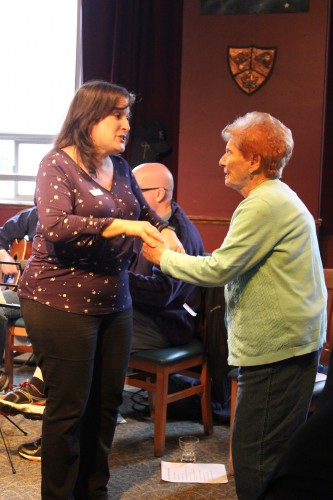 Back at the Tranzac Club, Flax introduces Moon River, and Waldston’s mother begins shuffling her feet. Gotlib recognizes the movement as a signal that she wants to dance. He grabs her hand and they sway and spin in perfect symmetry. She starts singing “La, la-la.”
Back at the Tranzac Club, Flax introduces Moon River, and Waldston’s mother begins shuffling her feet. Gotlib recognizes the movement as a signal that she wants to dance. He grabs her hand and they sway and spin in perfect symmetry. She starts singing “La, la-la.”
Shimona’s lifelong love of dance is one of the few remaining things that can rouse her from apathy, says Waldston. “She and my father tore up every dance floor they could find,” she says. Waldston imagines that a strong beat revives these special moments. “I see her eyes sparkle and she lights up.”
Shimona’s response isn’t an anomaly. Human beings are wired to react to rhythm, says University of Toronto alumnus, Dana Swarbrick, MSc. candidate, Rehabilitation Sciences. “When a groovy song comes on, you can’t help but tap your toes,” she says. This reflex can serve Parkinson’s patients, Swarbrick explains. These clients have trouble walking due to degeneration in the brain region that initiates movement. But music can provide an alternate route to stimulate motion. When neurons in the brain’s sound processing centre detect music, they begin to fire in correspondence to the beat. These nerve cells then relay the rhythmic message to their counterparts in the motor area, which resonate in conformity and jumpstart the muscles. Over time Parkinson’s patients incorporate these new patterns into their gait.
Another element of music, its vibrations, has been used to treat some brain disorders, says Amy Clements-Cortes, music therapist and assistant professor, University of Toronto Faculty of Music, who worked with U of T’s professor emeritus Lee Bartel to pioneer rhythmic sensory stimulation for Alzheimer’s patients. Neurons have to pulse in synchrony to transmit messages, says Clements-Cortes. One of the brain’s crucial frequencies, 40 hz (corresponding to a low E on the piano), is vital for communication amongst its segments.
In Alzheimer’s, dying nerve cells reduce the strength of the critical gamma range brain waves, interfering with neuronal messages and dulling thought. But sound can reboot these deficient brain signals from without. In a 2016 pilot study, Alzheimer’s patients sat on a medical-grade chair equipped with speakers emitting a 40 hz sound which was both heard and felt. After just six sessions, patients with mild to moderate Alzheimer’s were temporarily sharper and more alert and aware of their surroundings.
Music’s healing power extends to the caregivers as well as to the participants. Tomaino witnessed these benefits firsthand in The Unforgettables, a New York choir she helped create for clients with dementia and their significant others. The group offered caregivers the opportunity to socialize and to see their loved ones revive in the spotlight’s warm glow. On one occasion, a man with severe memory loss performed a long solo by rote. “For partners that’s a gift that’s really hard to put a value on,” says Tomaino.
Recollectiv is generating similar rewards. The man with the smile, Bob Adolph, is gently tapping his wife’s hand in time to the beat. Rheba Adolph is thrilled at how well this first outing with the band has turned out. “It’s wonderful to watch him being so happy,” she says.
It hasn’t been easy to find activities where the couple can interact, since Bob Adolph has trouble talking. Once a professor of English literature, now words fail him and hamper his ability to communicate. But today’s songs have loaned him a new language that transcends the need for speech. “Aphasia is so isolating,” says his wife. “But music brings out feelings of closeness in both of us.”
Recollectiv sings its final song for the day. Gotlib thanks Shimona for the last dance and kisses her goodbye.
Flax beams at the band. “Great job!” she tells them, clapping. Flax feels buoyed by her first stint as a conductor. “It gave me energy,” she says. But she’s even more stoked about the gift she’s bestowed on the group, including the Adolphs. “They looked like they were walking down the memory lane of love,” she says. “I love helping people connect.”
Adolph helps her husband out of his chair. The couple leave the room, still holding hands.
For more information about Recollectiv, visit recollectiv.ca.
Vivien Fellegi is a former family physician now working as a freelance medical journalist.


